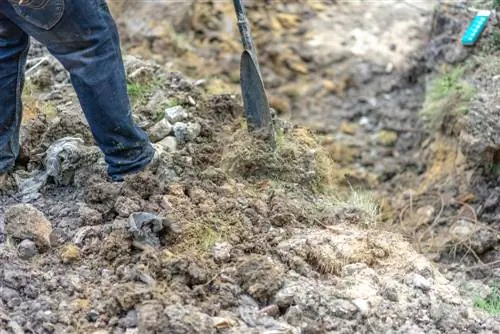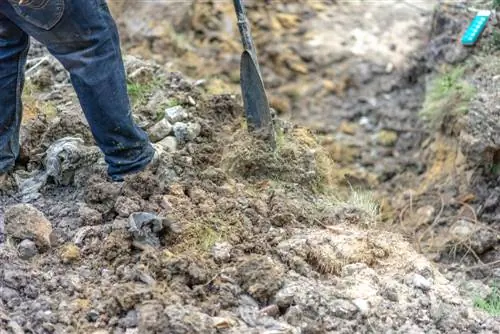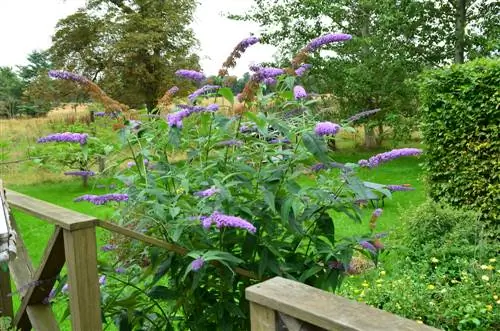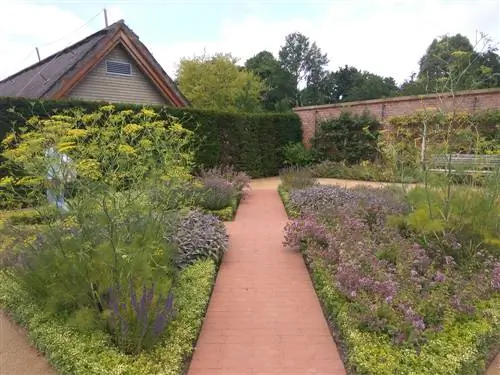- Author admin [email protected].
- Public 2023-12-16 16:46.
- Last modified 2025-01-23 11:21.
Nature expands rapidly as soon as humans retreat. In order to refresh the overgrown garden, an initial inventory is important. It provides information about whether digging makes sense or whether an alternative is an option.

When should you dig up an overgrown garden?
To refresh an overgrown garden, you should first take stock and observe what plants are present. Digging up the garden only makes sense if the ground is very uneven or heavy. Alternatively, you can create beds without digging by mulching the area.
Inventory
Before digging up a garden, you should get an overview. It is not uncommon for treasures to come to light in overgrown gardens that you would destroy if you took radical measures. Monitor the garden for at least a year. This will give you an insight into what is growing in your garden and what soil types predominate.
Existing beds with onion plants do not need to be dug up. Here, measures are sufficient to bring the bed back into shape. Wild herbs such as sorrel, nettle or lady's mantle spread in unused gardens, where they promote biodiversity and offer humans another benefit as vegetables.
Weigh up digging
Digging up the garden is an option if the ground is very uneven. Heavy substrates are difficult to use if they have not been thoroughly dug up and loosened. In light soils, it is sufficient to loosen the substrate with a sow tooth. Shifts are associated with a disruption of the soil structure. After such massive interventions, the soil needs time to regenerate.
If digging is necessary, you should pay attention to the weather conditions. Autumn is not always ideal for this measure. Shifting is also possible in spring if the growing season has not yet begun.
Then you should dig up the garden:
- after light ground frosts
- in early spring with low temperatures
- before intense rains
Beds without digging
After mowing, mulch the area properly, which will later become a bed. Large amounts of grass accumulate in the overgrown garden, which, when left uncut, are perfect as a layer of mulch. The longer the grass, the better. The shift will drop significantly over the next six months.
Check the condition of the grass underneath and add an additional layer of mulch to the area if the grass underneath has not yet rotted. The material decomposes slowly and provides an ideal protective layer for the floor. It keeps the substrate moist and warm so that the soil organisms can convert the biomass into compost.






